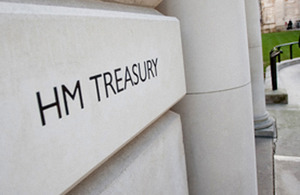Government announces further details about changes to pensions tax relief
Government announces further details about changes to pensions tax relief.

Financial Secretary to the Treasury, Mark Hoban, announced today how the facility for meeting high annual allowance (AA) charges from pension benefits will work in practice, including that the tax should be paid at the point the charge arises.
Schemes will have a considerable amount of time to complete the payment process, with additional flexibility being granted in the first year. Individuals with AA charges above £2,000 will be able to elect for the full liability to be met from their pension benefit. Schemes will be required to operate this facility only where an individual has exceeded the AA outright within that scheme in the relevant year. The government has given schemes flexibility in how they operate, but is clear that any adjustment to an individual’s pension benefit should be fair to all scheme members.
The government expects most individuals and employers to adapt their pension saving behaviour to avoid incurring a charge by exceeding the AA, and has put in place measures such as the carry forward of unused allowances to protect individuals further. However, recognising that, in some circumstances, individuals could still see high charges reflecting significant uplift in pension value in a given year, the government consulted on options to enable individuals to meet these charges from their pension benefits.
The detailed policy specification has been set out in a summary of responses document and draft clauses.
As announced in October 2010, from April 2011 the annual allowance (AA) for tax-privileged pension saving will be reduced from £255,000 to £50,000 and from April 2012 the lifetime allowance will be reduced from £1.8 million to £1.5 million. This is a simpler and fairer approach to making a more sustainable and affordable system of pensions tax relief. The reduction of these allowances will generate around £4 billion annual revenue in steady state, while preserving incentives to save, and lessening the impact on UK business to attract and retain talent.
Mark Hoban said:
We have abandoned the previous government’s complex proposals and developed a solution that will help to tackle the deficit, but not hit those on low and moderate incomes. We have taken a tough, but fair decision.
The government believes that our system is fair, will preserve incentives to save and - compared to the last government’s approach - will help UK businesses to attract and retain talent.
Notes for editors
-
The government confirmed in the June Budget that it is committed to the reform of pensions tax relief and would continue with plans that it inherited to raise revenues from restricting pensions tax relief from April 2011. It felt that this approach could have unwelcome consequences for pension saving, bring significant complexity to the tax system, and damage UK business and competitiveness. These concerns were shared by representatives of the pensions industry and employers.
-
The June Budget announced that the government was considering an alternative approach to restricting pensions tax relief, involving reform of existing allowances. A discussion document on the subject “Restriction of pensions tax relief: a discussion document on the alternative approach” was published in July 2010, inviting views on a range of issues around the precise design of any such regime.
-
Throughout the summer an informal consultation was held, with a wide range of pensions professionals, industry bodies, employers and individuals’ representatives across the public and private sector engaging with HM Treasury and HM Revenue & Customs. The government received 238 written responses, 183 of which were from organisations. The government is grateful to all those who have provided views and participated in discussions, and will continue to work closely with interested parties to ensure that the reform is introduced as smoothly as possible.
-
Almost all of the responses to the discussion document welcomed the alternative approach as a more workable way of restricting pensions tax relief, and one which would also preserve incentives to save. However, several respondents noted the challenges for defined benefit schemes and their members, unless mitigated by specific measures in the design of the overall regime.
-
Any reform must be sustainable in the long-term. The discussion document the government published last summer noted that a reduction in the annual allowance to between £30,000 and £45,000 could achieve this objective. However, the government has decided that targeting the lifetime allowance alongside the annual allowance enables the latter to be £50,000. This will ensure that fewer individuals on low incomes are affected by the regime.
-
Comments are welcome on the draft clauses, which will be included in the Finance Bill 2011.
-
In order to protect the public finances, it is necessary to introduce the reduced annual allowance from April 2011. The government plans to introduce the reduction in the lifetime allowance from April 2012.
Non-media enquiries should be addressed to the Treasury Correspondence and Enquiry Unit on 020 7270 4558 or by e-mail to public.enquiries@hmtreasury.gsi.gov.uk
Media enquiries should be addressed to the Treasury Press Office on 020 7270 5238.